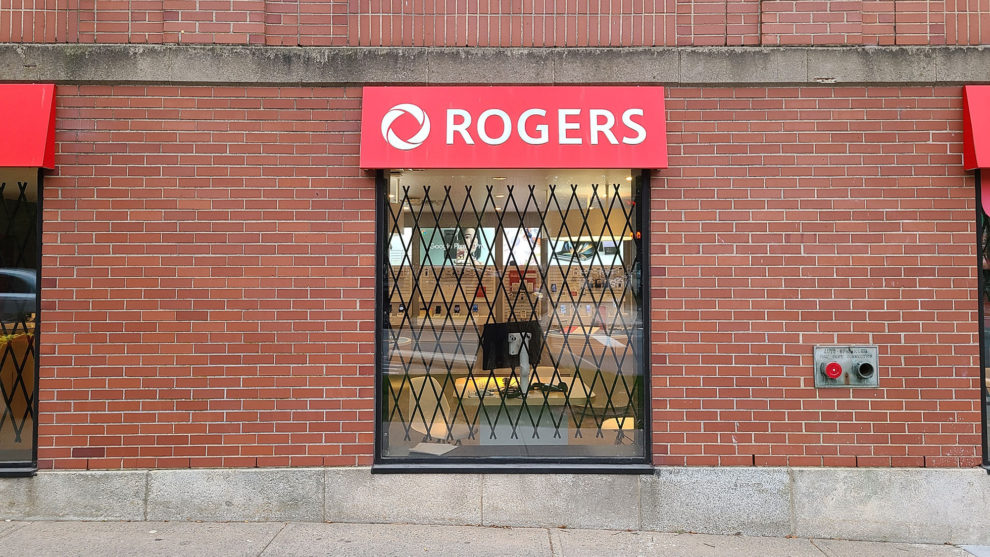CRTC must regulate telecommunications companies’ service failures during extreme weather, advocate says
Consumer-interest lawyer says new Nova Scotia regulations likely fall outside provincial jurisdiction

caption
In the aftermath of Hurricane Fiona, many Nova Scotians did not have cellular serviceAnother season of wintry weather has begun in Nova Scotia, with 86,000 people losing power following a Dec. 1 storm, according to the province’s power utility.
This year, however, the Nova Scotia government says new service standards for telecommunications companies will mitigate the impact of future outages.
New legislation passed last month “requires telecommunications companies to provide service during emergencies and to hold those companies accountable to Nova Scotians when they fail to do so,” according to a Nova Scotia government news release.
The legislation, which amends the Emergency Management Act and Emergency 911 Act, followed widespread mobile service failures during Hurricane Fiona in September.
“We need our telecommunications companies to step up and do better. We will no longer accept the status quo,” said Minister of Municipal Affairs and Housing John Lohr in a news release. “We need to see significant improvements before the next storm or there will be significant penalties.”
After a night of furious wind and rain during Hurricane Fiona, many Nova Scotians found that not only were they without power, they also could not make phone calls, send text messages or connect to mobile internet.
“It was a surprise. The worst-case scenario in my head was that we would lose power,” Fido customer Zoë Cromwell said. “But I wasn’t thinking I wouldn’t be able to get in touch with people. It felt like more of a crisis.”
For Koodo customer Rooks Field-Green, the mobile service failures prevented family members in Ontario from checking in on him. “My mom, who’s a bit on the anxious side, was sending a lot of messages that weren’t coming through,” he said.
Both Field-Green and Cromwell wanted their service providers to proactively communicate with them prior to the hurricane’s arrival.
“Knowing it was a possibility that cell phones weren’t going to be able to connect would have been really useful,” said Field-Green. “It wouldn’t have been a stressful thing.”
Cromwell said the lack of communication was frustrating, especially in contrast with the information available from Nova Scotia Power, the province’s power utility. “When the hurricane was coming, (Nova Scotia Power told us to) prepare for outages,” they said. The utility also operates a public outage map that specifies estimated restoration times for all outages.

caption
Nova Scotia Power’s detailed outage map is always available, including during extreme weather events.The executive director and general counsel of the Public Interest Advocacy Centre says the reason telecommunications companies are not communicating transparently to customers during service failures is because of the Canadian Radio-television and Telecommunications Commission’s lack of regulation. “The companies don’t have any rules,” John Lawford said.
“The CRTC has the authority to bring them into a room and make them tell everybody what they’re going to do,” Lawford said, “And if … it’s not adequate, they can make them do (more). And I have seen no appetite on the part of the regulator to do its job.”
Lawford contrasts Canadian regulations with those set by the Federal Communications Commission in the United States. “They have requirements for reporting on the outages at cellphone towers,” he said.
According to Lawford, telecommunication companies in the U.S. are required to provide the Federal Communications Commission with daily updates on which cell phone towers are down in each county, along with estimates on when they will be operational.
In response to Hurricane Fiona, Fido provided customers with an additional 50 gigabytes of mobile data for use between Sept. 24-28, but Cromwell was unimpressed. “I’m already paying for more than enough data … nice effort but this isn’t helpful,” they said, adding that a bill deduction would have been more meaningful.
Koodo also waived overage fees for calls and mobile data between Sept. 24 and Oct. 3. Field-Green says the fee waiver did not seem helpful because service was down.
Lawford says the CRTC could set standards such as minimum refund amounts or the maximum service failure duration before telecommunications companies must compensate customers.
Instead, Lawford says the regulator has “left them to set their own terms.”
“Therefore, they mostly disclaim any liability during weather events for any losses that you might suffer.”
For example, the Bell Mobility Terms of Service states, “Any credit or refund for service unavailability or service outage is at our discretion.”
In the Rogers Terms of Service, customers agree that in the event of a network outage or power failure they, “acknowledge and understand that the Services or access to the Services, including 9-1-1, public alerts or accessibility services, may not function correctly or at all.”

caption
Rogers’ Terms of Service do not guarantee service to customers.While the province has set the new service standards for telecommunications companies, Lawford says the companies are likely to challenge the provincial rules in court. “The difficulty is that telecommunications is most definitely a federal responsibility, not provincial. And, unfortunately, I think any provincial efforts in this area are most likely to be challenged as unconstitutional (by telecommunications companies),” he said.
To improve the for-profit service providers’ responses to extreme weather events, which an April 2022 study indicates are growing stronger due to climate change, Lawford says Canada’s telecommunications regulator must ensure providers are conducting long-term planning and are adequately funding infrastructure resiliency.
About the author
Andrew Lam
Andrew Lam (they/she) is a Chinese and trans journalist interested in labour, LGBTQIA+, and political stories. They hope to leverage their data...
